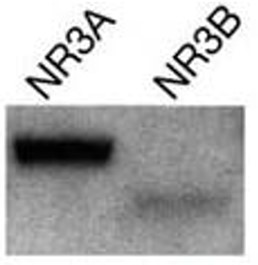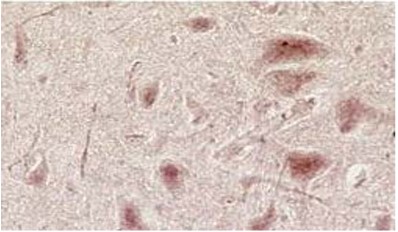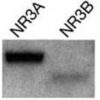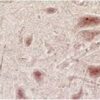Anti-Glutamate NMDA Receptor NR3A/B Subunit Antibody (60100)
$437.00
SKU: 60100
Categories: Antibody Products, Neuroscience and Signal Transduction Antibodies, Products
Overview
Product Name Anti-Glutamate NMDA Receptor NR3A/B Subunit Antibody (60100)
Description Anti-Glutamate NMDA Receptor NR3A/B Subunit Mouse Monoclonal Antibody
Target Glutamate NMDA Receptor NR3A/B Subunit
Species Reactivity Human, Mouse, Rat
Applications WB,IHC
Host Mouse
Clonality Monoclonal
Clone ID K35/40
Isotype IgG1
Immunogen Fusion protein corresponding to aa 780-914 of the NR3A extracellular III-IV loop
Properties
Form Liquid
Concentration Lot Specific
Formulation PBS, pH 7.4
Buffer Formulation Phosphate Buffered Saline
Buffer pH pH 7.4
Format Purified
Purification Purified by Protein G affinity chromatography
Specificity Information
Specificity This antibodyThis antibody recognizes a unique epitope within the immunoglobulin (Ig)-like domain of arginine-gingipain (RgpB). recognizes NMDAR subunits NR3A and NR3B. It does not cross-react with subunits NR1 or NR2A-D.
Target Name Glutamate receptor ionotropic, NMDA 3A
Target ID Glutamate NMDA Receptor NR3A/B Subunit
Uniprot ID Q8TCU5
Alternative Names GluN3A, N-methyl-D-aspartate receptor subtype 3A, NMDAR3A, NR3A, NMDAR-L
Gene Name GRIN3A
Sequence Location Cell membrane, Cell junction, synapse, postsynaptic cell membrane, Cell junction, synapse, postsynaptic density
Biological Function NMDA receptor subtype of glutamate-gated ion channels with reduced single-channel conductance, low calcium permeability and low voltage-dependent sensitivity to magnesium. Mediated by glycine. During the development of neural circuits, plays a role in the synaptic refinement period, restricting spine maturation and growth. By competing with GIT1 interaction with ARHGEF7/beta-PIX, may reduce GIT1/ARHGEF7-regulated local activation of RAC1, hence affecting signaling and limiting the maturation and growth of inactive synapses. May also play a role in PPP2CB-NMDAR mediated signaling mechanism. {UniProtKB:Q9R1M7}.
Research Areas Neuroscience
Application Images



Description Immunoblotting: use at 1-10ug/ml. Predicted molecular weight 125-130kDa. Detection of NR3A- and NR3B-transfected HEK293T cell lysates probed with #60100.

Description Immunohistochemistry: use at 1-10ug/ml. Mouse spinal cord ventral horn stained with #60100.
Handling
Storage This product is stable for at least one (1) year at -20°C. Store in appropriate aliquots to avoid multiple freeze-thaw cycles.
Dilution Instructions Dilute in PBS or medium that is identical to that used in the assay system.
Application Instructions Immunoblotting: use at 1-10ug/mL. Predicted molecular weight 125-130kDa. Detection of NR3A- and NR3B-transfected HEK293T cell lysates probed with #60100.
Immunohistochemistry: use at 1-10ug/mL. Mouse spinal cord ventral horn stained with #60100.
These are recommended concentrations.
Endusers should determine optimal concentrations for their applications.
Immunohistochemistry: use at 1-10ug/mL. Mouse spinal cord ventral horn stained with #60100.
These are recommended concentrations.
Endusers should determine optimal concentrations for their applications.
References & Data Sheet
Data Sheet  Download PDF Data Sheet
Download PDF Data Sheet
 Download PDF Data Sheet
Download PDF Data Sheet





